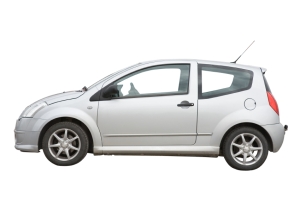 You’ve accessed your credit scores in preparation for buying a vehicle. You’ve done everything in your power to get your scores as high as possible. Then you sit down with your lender only to be told they use something called “auto credit scores.” No need to get flustered. While there are a few key differences, auto credit scores are pretty similar to general credit scores. Once you know the ways they vary from your general credit scores, you can quickly understand how to master yours.
You’ve accessed your credit scores in preparation for buying a vehicle. You’ve done everything in your power to get your scores as high as possible. Then you sit down with your lender only to be told they use something called “auto credit scores.” No need to get flustered. While there are a few key differences, auto credit scores are pretty similar to general credit scores. Once you know the ways they vary from your general credit scores, you can quickly understand how to master yours.
What’s different?
Auto credit scores normally put greater emphasis on:
- Whether or not you’ve had an auto loan or lease in the past (having at least one is better)
- Payment on vehicle loans or leases (missed payments are bad)
- Settlement for less than the amount owed on an auto loan or lease (bad)
- Auto loan or lease sent to collections (bad)
- Repossession of a vehicle (bad)
How do I know which kind of score is being used?
As with any type of loan application, your best method is to simply ask the lender what type of score they will be using to consider your application. In the vast majority of cases, a lender will use an auto credit score for an auto loan or lease.
How do I get my auto credit score and report?
Before you run off to the internet trying to get your auto credit reports, know that the information used to compile auto credit scores comes from the information that is already in your regular credit reports from Equifax, Experian and TransUnion. You can get those for free once a year by calling 877-322-8228 or visiting www.annualcreditreport.com. Odds are that you won’t be able to get a copy of your auto credit report unless it is provided by a lender.
Depending on which score your lender is using, you may not actually be able to access your auto credit score either. This isn’t as bad as it sounds, though. If you can access your general credit score, such as the highly popular FICO scores, you should have a good idea of what your auto score will look like. In most cases, the general credit scores give you a good approximation of what your auto scores will look like.
How do I address my auto score?
To put it simply, always pay your vehicle loans or leases on time and avoid at all costs negative outcomes like collections or repossessions. Since auto scores do also consider other types of credit you have used – like credit cards or mortgages – it’s wise to pay those on time too. In addition, credit scores usually favor those who:
- Keep balances low on revolving accounts, like credit cards or personal lines of credit
- Keep revolving accounts open for an extended period of time
- Have a diversity of types of credit
- Limit their applications for new credit
Auto credit scores aren’t terribly complicated for the most part. Just keep in mind are that if you miss payments or fail to meet your obligations with vehicle leases or loans, doing so will bring down your score and may mean paying more to have access to a vehicle in the future.








